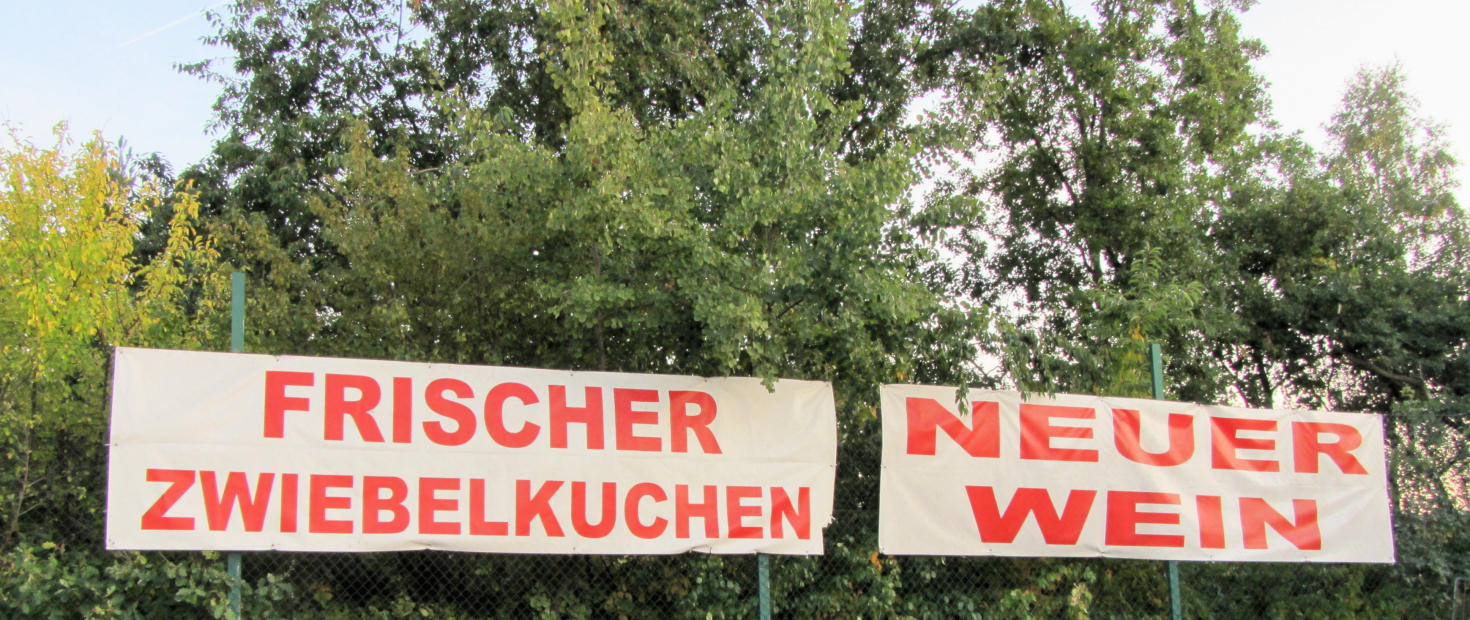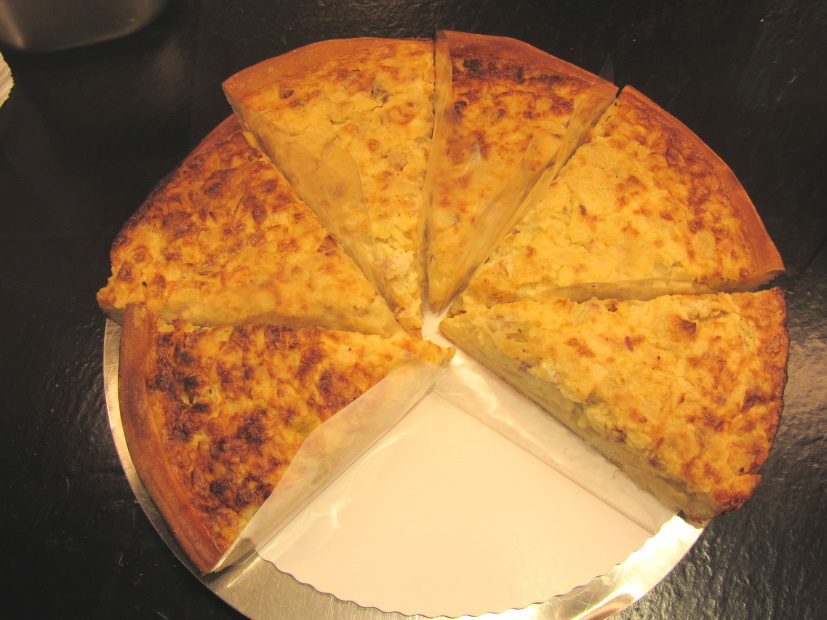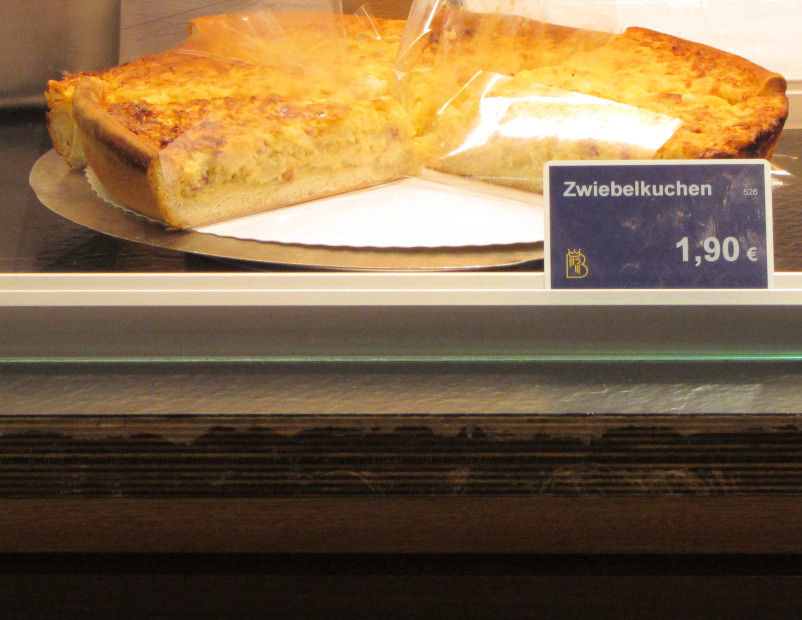
Just like many an American who shops in the German stores close to base, I have been looking at this sign next to the supermarket off the Opel circle for years now, and every time I’ve seen it, I’ve said: Yuck! That’s because I know just enough German to be aware that Kuchen = cake and Zwiebel = onions. Onions on a cake? YUCK!
Then last week, Heidi made me eat a piece of Zwiebelkuchen. And it’s delicious!

As you can see from this photo, Zwiebelkuchen isn’t a cake at all. It’s a lot closer to being a quiche. There’s a crust on the bottom, but it isn’t a pie crust. It’s made of yeast bread. Then comes the filling of onions, green onions, eggs, cream, and speck, which is German for bacon.
I’m seeing signs for Zwiebelkuchen right now because, as the top photo points out, it’s traditionally eaten with the new wine, also called Federweißer in this part of Germany, where Riesling is one of the dominant grape varieties. Federweißer, as the name suggests, is new white wine, from Feder (feather) and weiß (white). It gets that name because the yeast hangs suspended in the glass and gives it a distinctive look–also a distinctive fizz. It’s very refreshing, but it’s at least four percent alcohol, and heading rapidly higher. As a new wine, it’s not finished changing yet. At this time of year, there are signs everywhere for new wine or Federweißer–many of them hand-lettered. New wine can’t be bottled in an airtight container. It would explode! So it’s usually served right at the winery where it’s being made.
If you’d like to make your own Zwiebelkuchen at home, here’s a recipe. Or you can do what I do: walk into your nearest bakery and look for this! Or ask your German friends where their favorite Zwiebelkuchen comes from. It’ll save you hours in the kitchen.

Photos taken September, 2011, in Kaiserslautern, Germany. Text and photos copyright 2011 by Clare B. Dunkle.
